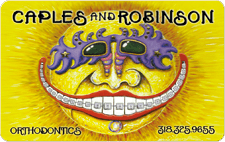
Your mouth’s ability to function is a vital part of your oral health. In orthodontics, a patient’s “bite” refers to the way upper and lower teeth come together when the mouth is at rest. When teeth meet improperly, or don’t meet at all, it is known as a malocclusion. If malocclusions are left untreated, it can cause lasting damage to the mouth’s ability to function. Contact our orthodontist in 71201 today for treatment.
What Types of Malocclusion Exist?
There are many different types of malocclusion, including:
- Open Bite – Occurs when the front teeth meet but the back teeth do not. This problem generally occurs from excessive thumb sucking or mouth breathing during infancy and adolescence. If not properly treated, it can lead to issues swallowing and speaking.
- Underbite – Underbite occurs when the lower jaw remains in front of the upper jaw while the mouth is closed. This problem can lead to excessive tooth wear and stress on the jaw.
- Cross-bite – Cross-bite occurs when the upper teeth rest inside of the lower teeth. This leads to excessive wear on tooth enamel and uneven jaw growth.
- Deep Bite – Deep bites are when the upper teeth cover the lower teeth when the jaw is closed. Like cross-bites, deep bites can cause excessive enamel wear and damage to teeth.
- Crowding – Crowding refers to the jaw having inadequate room for teeth to properly grow in. This leads to an increased risk of gum disease as the teeth are much more difficult to clean.
- Spacing – Spacing is the opposite of crowding, occurring when there is too much of a gap between teeth. Spacing can also lead to gum disease if not properly addressed.
- Protrusion – Protrusion refers to the front teeth moving out farther than others.
How Are Bite Problems Treated?
There are various kinds of treatment utilized for malocclusion, depending on the type and severity. These can include:
- Braces – Made of either metal or clear plastic and linked with wires, these gradually shift teeth into the correct position.
- Tooth removal – Sometimes a malocclusion results from a crowded jaw, and removal of a tooth will be recommended.
- Reshaping teeth – Using veneers and bonding, orthodontists may alter the shape of teeth to fit together better.
- Jaw surgery – This may be recommended if necessary.
If you have any questions about malocclusion or would like to schedule an appointment, contact our orthodontics office in Monroe, LA today.





